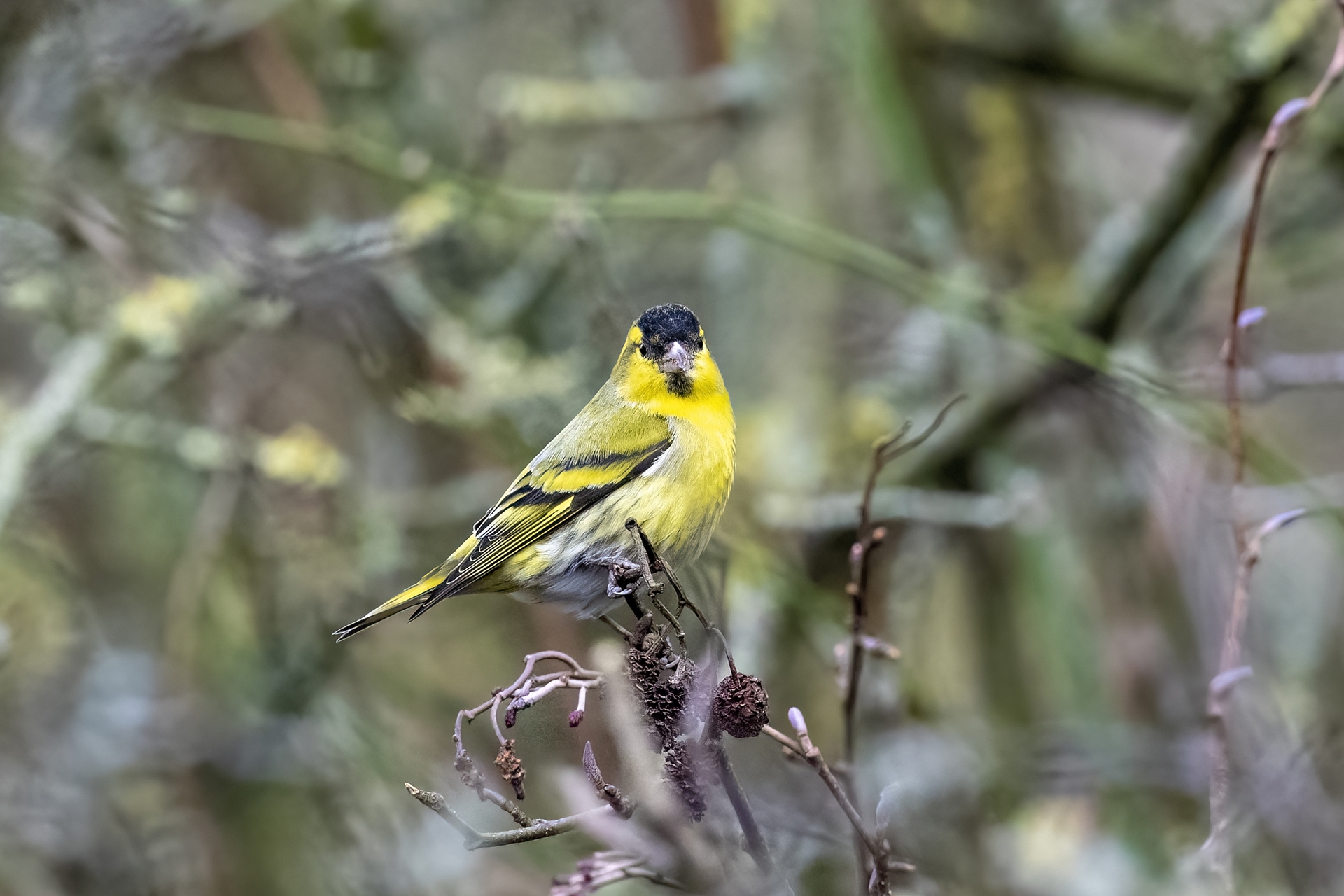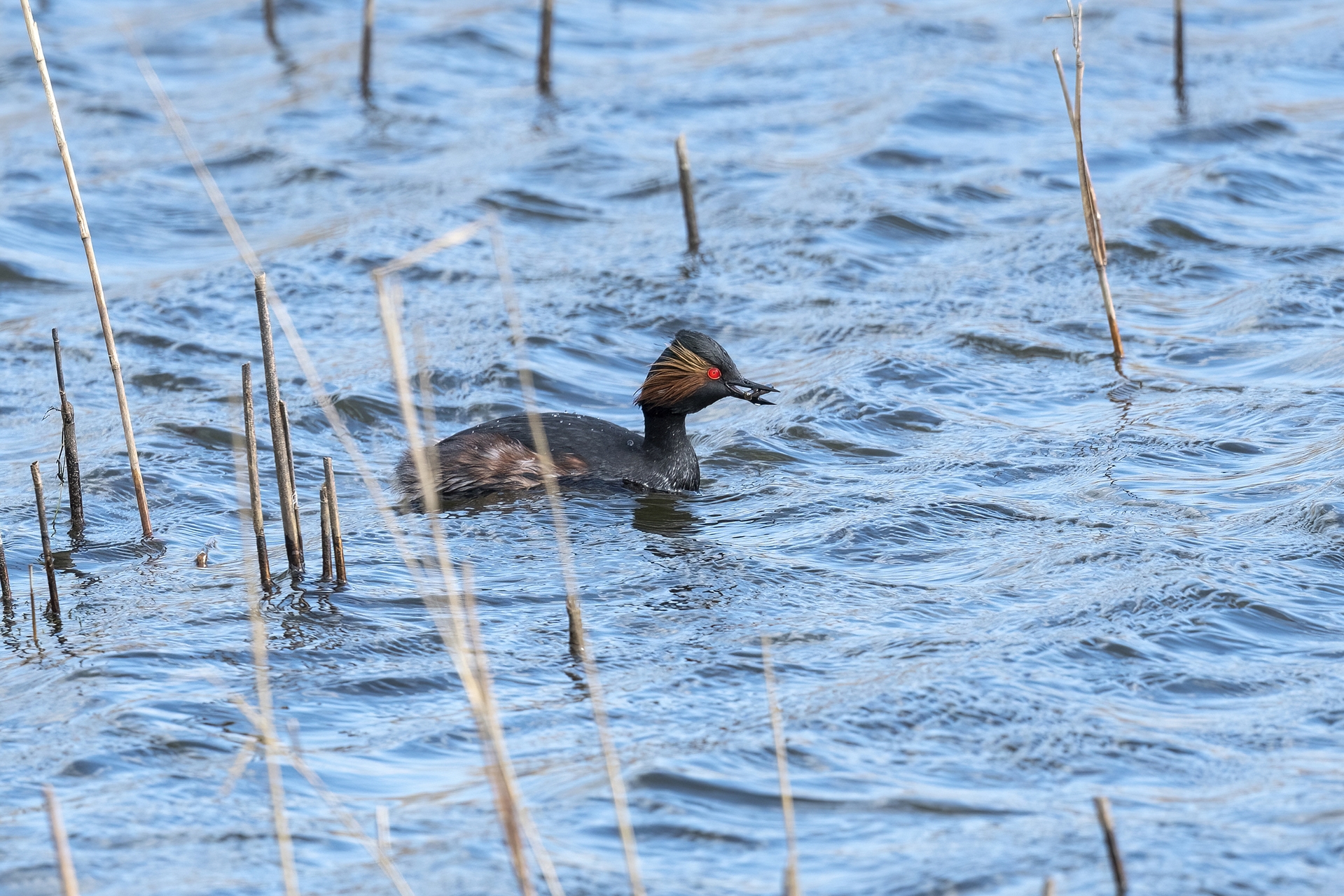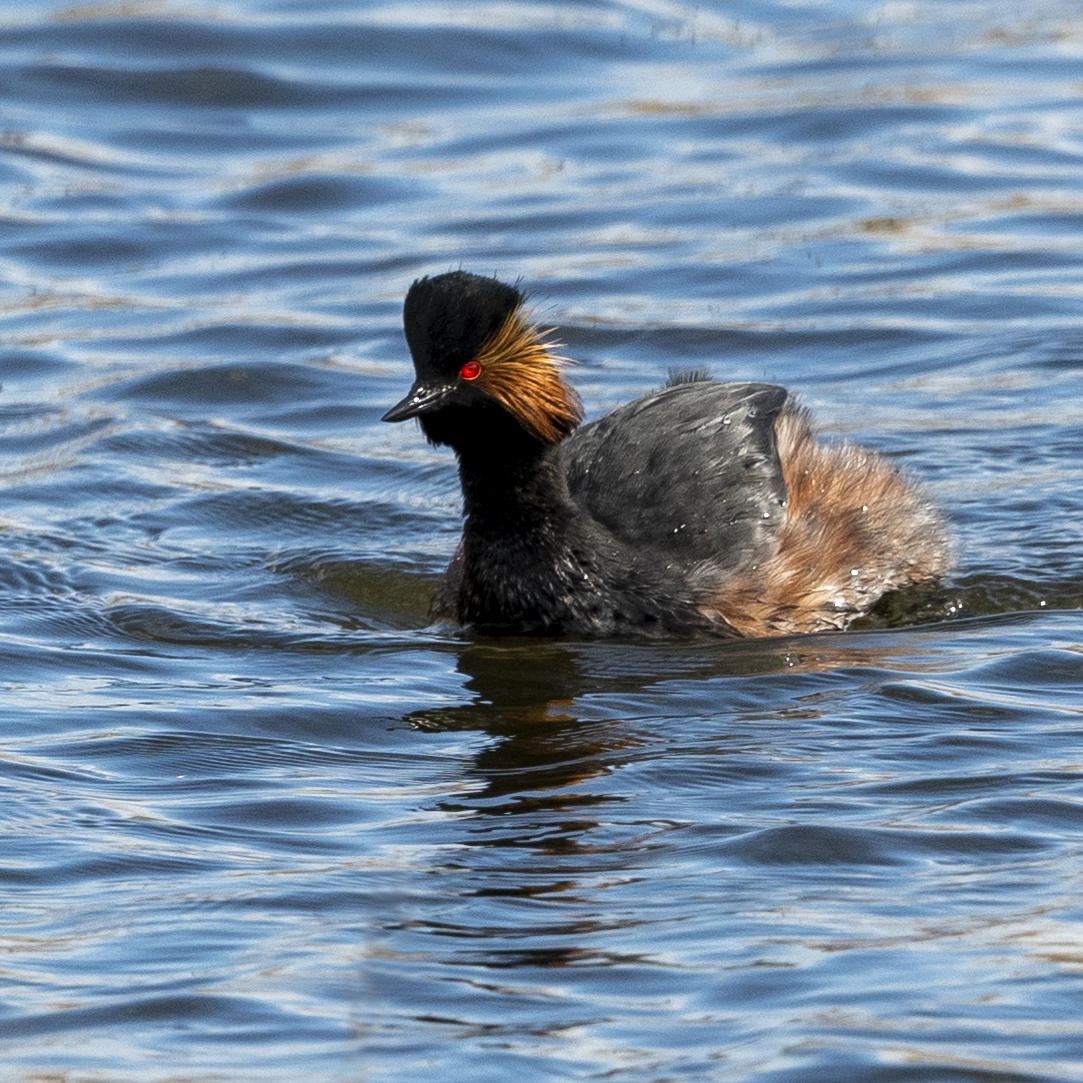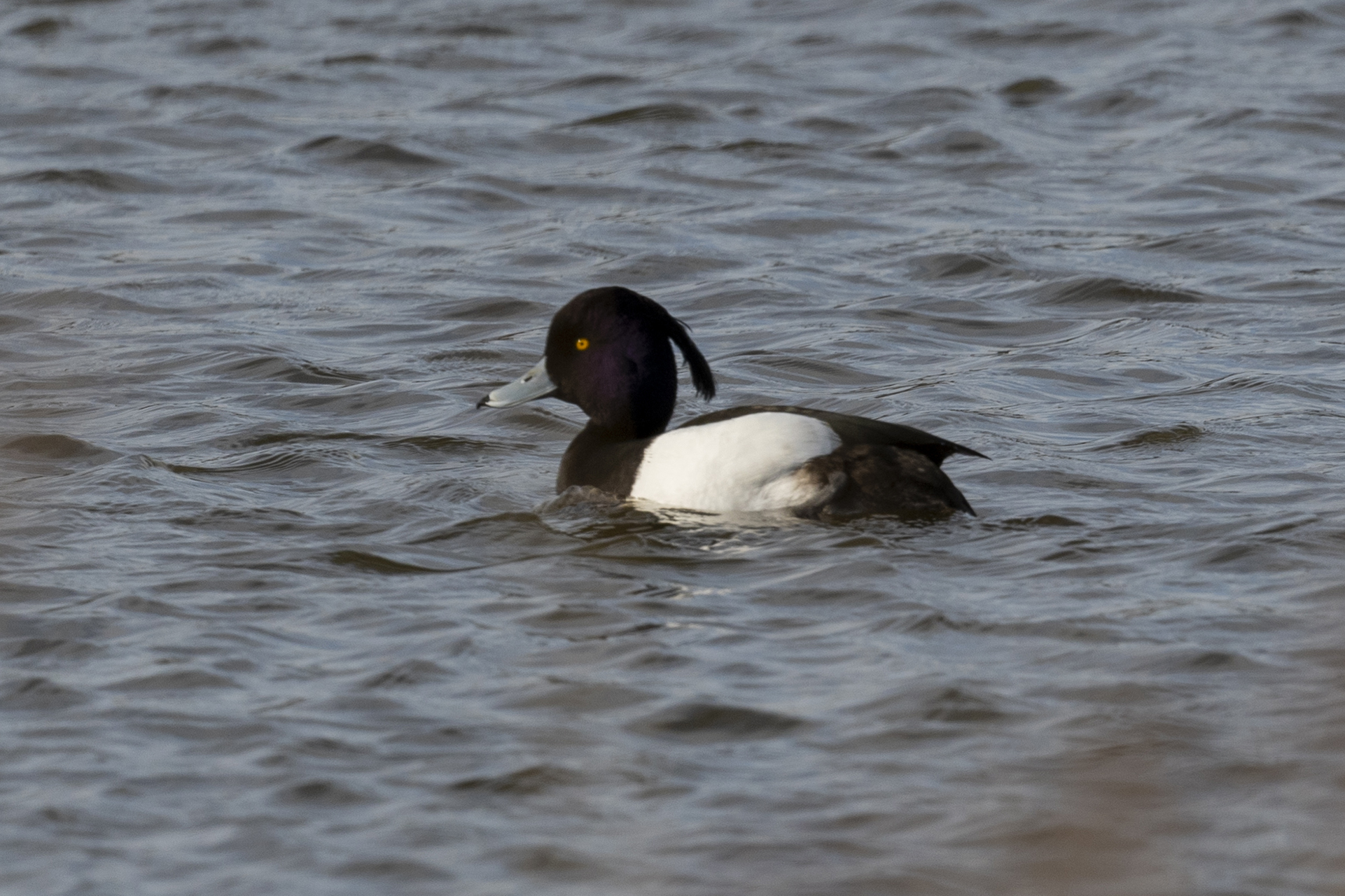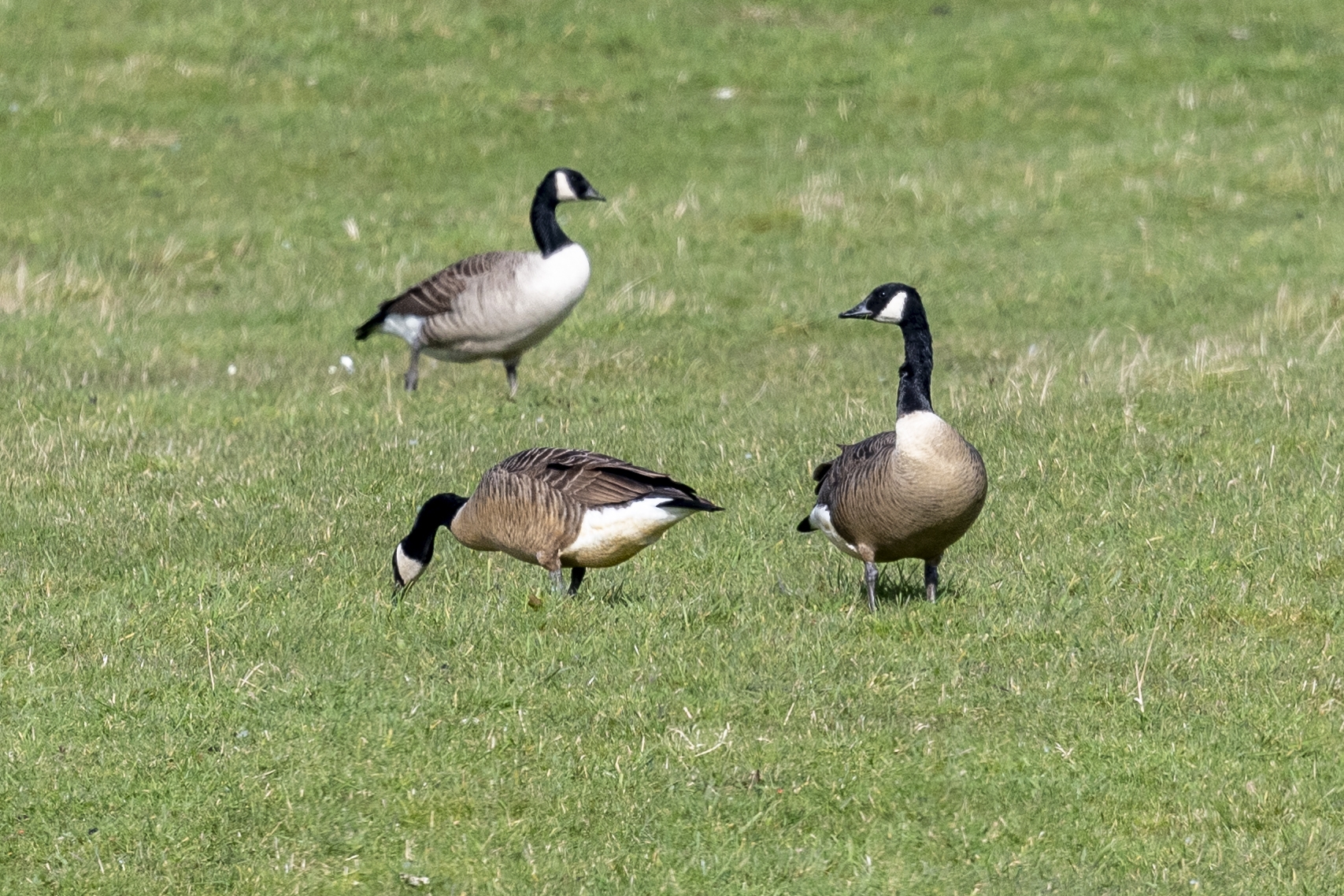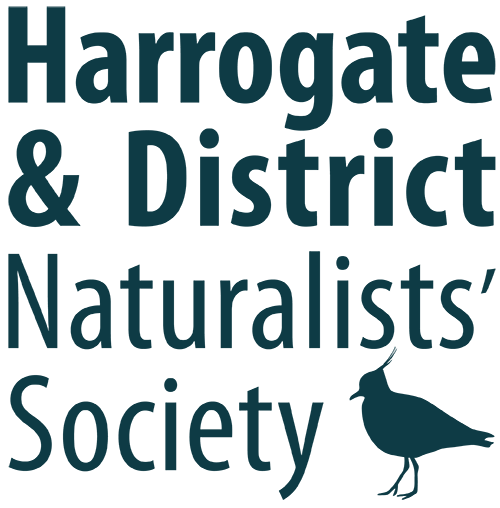15 members joined Colin Slator in a quest to find Signs of Spring at RSPB St Aidan’s. This part of the Aire Valley has been reclaimed from its former mining past and now offers extensive and varied habitats. The reserve is also used for flood water storage and there were signs that it had recently been used as such. Volunteers were out in force clearing debris and digging ditches and indeed part of the causeway was still under water.
The first sounds of spring we heard were the cries of the Black headed Gull colony! More subtle were the displaying Lapwings.
There was a good number of geese, Canada and Greylag, a couple of which tested our wits, looking slightly smaller and browner than the usual Canada Goose. Winter ducks were still around as well as some of the summer breeders, Pintail, Wigeon, Goldeneye, Pochard, Tufted, Mallard, Gadwall and Teal.
The Bitterns were intermittently booming as we approached the area where the Black necked Grebes had been seen. We had already had great views of Great crested Grebes in their summer finery, and heard the whinny of Little Grebes, but would we make it a three-grebe-day? Our first sighting of a Black necked Grebe was unbelievable, one was swimming straight towards us at close range, showing its wonderful plumage and its shiny red eyes. What a bird! We did however see another one at a more usual range, disappearing around the back of the reed bed!
The work that has been done to protect the ridge and furrow wader habitat with an anti predator fence was paying dividends, with several Lapwings already nest scraping. Other waders present were Redshanks and Oystercatchers.
Several Buzzards and Red Kites enjoyed the windy conditions, and Kestrels were busy too.
Although Twite had been reported we didn’t manage to find any, only Reed Buntings, Siskin, Blue Tits, Great Tits and Linnets. Cetti’s Warblers periodically burst into song as we walked round the reserve.
After lunch we made the decision to relocate to Fairburn Ings instead of continuing around the rest of St Aidan’s. We were hoping to see Spoonbill and Egrets. The highest number of egrets we has seen so far were decoy ones placed in trees on an island towards the Swillington Ings end of the reserve. Where are all the Little Egrets we wondered.
When we got to RSPB Fairburn Ings it was obvious that it had been similarly ravaged by flooding but the paths were all open and clean so we set off up to the Coal Tips Trail. Tim had stopped along the road to confirm the presence of a roosting/nesting Spoonbill but try as we might, it was not visible from the trail. The heronry was very busy, the Herons had already been nest refurbishing and it looked like many were sitting on eggs. Tens of Cormorants were draping themselves over white bleached trees, however, still no Egrets!
Many thanks to Colin for leading a very enjoyable trip with his usual expertise and enthusiasm!
